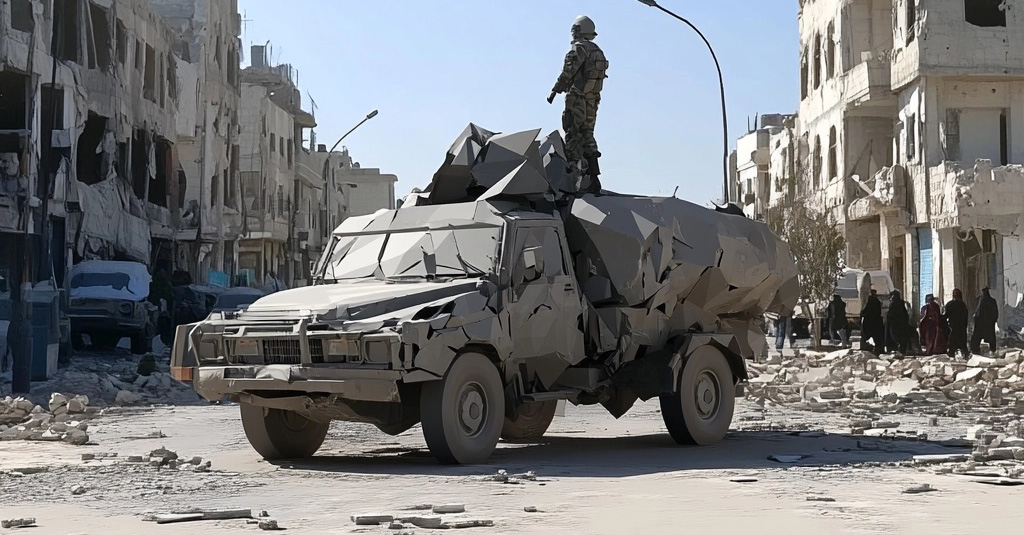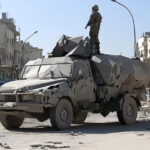The Syrian civil war, one of the most devastating conflicts of the 21st century, has taken a dramatic turn. For the first time since 2016, Syrian opposition forces have regained significant control over Aleppo, Syria’s second-largest city. This unexpected development is reshaping the dynamics of the ongoing conflict and attracting global attention.
The Historic Offensive by Syrian Rebels
In a bold move, the newly formed “Military Operations Command” launched a surprise offensive against Syrian government forces and their allies. This coalition, comprising a mix of Islamist and moderate factions, swiftly advanced into Aleppo, capturing key areas with minimal resistance. Their progress has been remarkable, as they now control the majority of the city, with only a few northeastern neighborhoods still held by the Assad regime and its Iranian-backed militias.
The rebel coalition has also declared a 24-hour curfew to ensure the safety of Aleppo’s residents and to protect public and private property from potential harm.
Key Locations Captured in Aleppo
Rebel forces have strategically secured:
- Central Aleppo landmarks: Videos show fighters waving opposition flags at prominent sites, including the city’s iconic citadel.
- Aleppo’s airport: While not yet verified, rebels claim they now control this critical facility.
These victories highlight the coalition’s determination to reclaim territory and challenge the Assad regime’s stronghold in northern Syria.
The Role of International Actors
The offensive comes at a time when Syria’s allies, Russia and Iran, are facing external pressures. With Russia focusing on its conflict in Ukraine and Iran grappling with Israeli strikes, the timing of the Aleppo offensive seems carefully calculated.
In response to the rebels’ advance, Russian forces launched aerial strikes targeting opposition positions in Aleppo and neighboring Idlib provinces. These attacks caused significant casualties, with videos showing the aftermath of strikes in the city’s western districts. Despite this, the rebel coalition continues to consolidate its hold over the captured territories.
Kurdish Forces and the Rebel Conflict
Kurdish militias, known as the YPG, have also taken advantage of the chaos, expanding their control over several neighborhoods previously held by the Syrian regime. However, tensions between the Kurdish forces and the rebel coalition have led to clashes, adding another layer of complexity to Aleppo’s volatile situation.
The Significance of Aleppo in Syria’s Civil War
Aleppo has long been a focal point in Syria’s civil war. The city’s capture by government forces in 2016 marked a turning point in favor of President Bashar al-Assad. Now, its recapture by opposition forces signals a potential resurgence of the rebel movement, which had largely stagnated following a 2020 ceasefire.
This latest battle underscores the fragile nature of peace in Syria. With more than 300,000 civilians killed and millions displaced, the conflict continues to wreak havoc on the region. The Aleppo offensive is a stark reminder of the unresolved tensions and the high stakes for all parties involved.
Looking Ahead: What’s Next for Aleppo and Syria?
As the rebels consolidate their gains, the Assad regime is preparing a counteroffensive, backed by reinforcements and continued support from Russia and Iran. Meanwhile, the rebel coalition has signaled its intent to launch further operations, including potential offensives against Kurdish-controlled areas.
The international community watches closely, as the battle for Aleppo could redefine the trajectory of Syria’s civil war. For residents of Aleppo, this renewed conflict brings both hope and uncertainty, as they navigate life in a city that has become a symbol of resilience amid war.
Conclusion
The recapture of Aleppo by Syrian rebels marks a pivotal moment in the country’s ongoing conflict. As events unfold, the world will closely monitor how this development impacts the broader struggle for control in Syria. For now, Aleppo remains at the heart of a conflict that continues to shape the region’s future.







